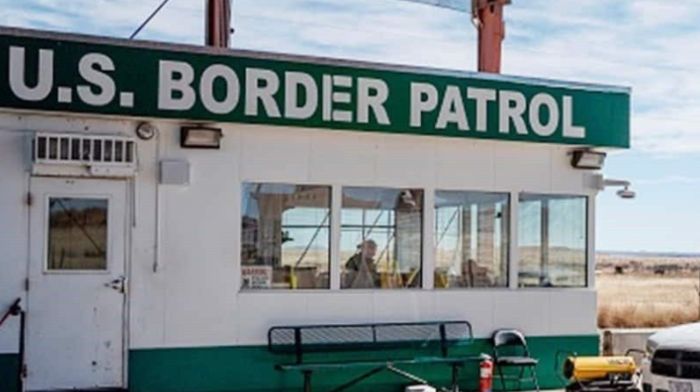By Bethany Blankley (The Center Square)
Nearly six weeks before testifying Tuesday before the House Committee on Oversight and Accountability, Chief Border Patrol Agent Gloria Chavez held a meeting with local law enforcement agencies in Weslaco, Texas, where she described the administration’s plan to release large numbers of Title 42 illegal aliens into the United States. the end
The Biden administration wanted to end Title 42, the public health authority first implemented under the Trump administration during the height of the pandemic, but Texas sued and a federal court in December blocked the administration from ending it.
Several people who attended the Dec. 20 meeting recorded it and provided an audio copy to Center Square on condition of anonymity for fear of administration reprisals. Chavez left for most of the briefing to make a phone call and was replaced by two other longtime Border Patrol agents.
Chavez leads the Rio Grande Valley sector of Texas, one of the most heavily trafficked areas. At the time, agents from nine southern border sectors encountered more than 50,000 foreign nationals at the border each week, he said.
Border Patrol agents took an average of 15,000 illegal aliens into custody a day in December, he said, with some sectors at 150% capacity.
“There is an expectation that we will see an increase in inflows and paroles in the RGV sector”, he said. The sector received about 20 flights and eight busloads of illegal aliens a week from Yuma, Arizona, and El Paso and Del Rio, Texas, because its facilities could hold more people.
Border Patrol apprehensions and reported departures in December were the highest in U.S. history at more than 300,000, according to data obtained by The Center Square.
RELATED: Border Patrol chief to testify before House committee after initially blocked by mayors
Support conservative voices!
Sign up to get the latest Political news, insights, and commentary delivered straight to your inbox.
At the December 20 meeting, a border agent said, “Everything has changed in the last two years. The entire landscape has changed in the past two years, not only with entries but the demographics and the types of people who are exploiting the immigration process,” according to audio recordings obtained by The Center Square.
As people come in, the agent said, “more people are processed for release because we can’t sustain it.” Holding facilities in Del Rio, El Paso, Yuma and El Centro were more than 100% capacity, the agent said. Four of the nine southwest border sectors were in the red, close to 150% capacity, he said.
It took into custody the largest number of Cubans and Nicaraguans in US history, he asked, “How do you catch more Cubans than Mexicans?” They have seen Cubans fly across the southwest border into Mexico to claim asylum because they are deported when they reach Florida.
“In fiscal year 2021 to 2022 there are cities in Mexico where people say they’re going to look for smugglers who charge less to bring them across the Rio Grande,” he said, adding that “Texas has the most traffic.”
Single, military-age men make up 70% of illegal entry, which is difficult to address because of security concerns, he said. They see armed men — 17 Border Patrol agents were assaulted last year, “Max. [number] We have ever seen,” he said.
By spring, all of the aerostats, balloons with surveillance capabilities, will not be operational because they are no longer being funded, he said. They served as vital “force multipliers,” he said, helping agents track diversions and other interdiction efforts.
When “the Mexican side knows they’re up,” he said, “the activity goes down.” With no aerostats in the air, cartels will have more power to evade law enforcement.
Agents also said the “drug of choice” coming through the southern border is “illegal fentanyl,” with the largest amount seized in the RGV sector, followed by the largest seizure of liquid meth at 3,000 pounds last year.
RELATED: Democrat El Paso Judge Testifies ‘No Open Borders in El Paso’
In response to a participant asking who was transporting illegal foreign nationals to the north by bus and stopping at local gas stations in local communities and letting people out, Lozi said it was their non-governmental organization (NGO) partners. However, he added, “There needs to be better coordination with the Border Patrol from NGOs to let us know where they put them.” Once they leave the US, there is no tracking system to know where they are.
The agent also told law enforcement that “Border Patrol couldn’t get through this without you,” thanking them for partnering with BP agents. He added that the agency “has been working with resilience to deal with multiple suicides; one in Brownsville, two in Corpus and one in the Weslaco area. We’ve never seen a suicide. [among Border Patrol agents] Earlier at this speed.
“If you see an agent, know an agent, give them a pat on the back, they need our support now more than ever.”
Upon his return, Chavez closed the briefing by saying that he was coordinating with local mayors and NGOs to relocate people to the United States, adding that the NGOs were “fantastic.” He said “special areas they were learning [the counties] We want to get them out of here,” referring to those released in the United States by the Biden administration.
Chavez is testifying before the US House Committee on Oversight and Accountability on Tuesday.
Syndicated with permission from Center Square.

